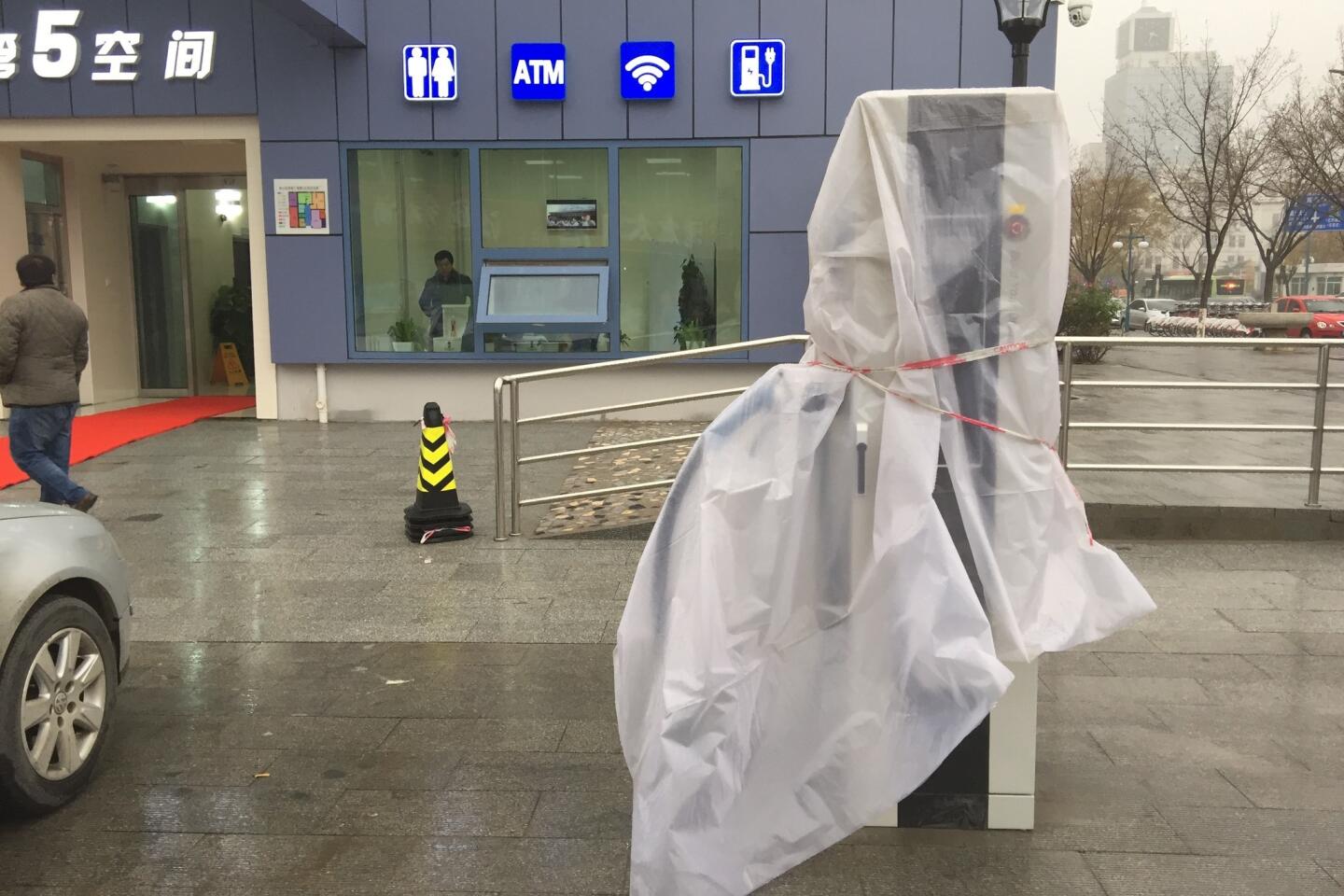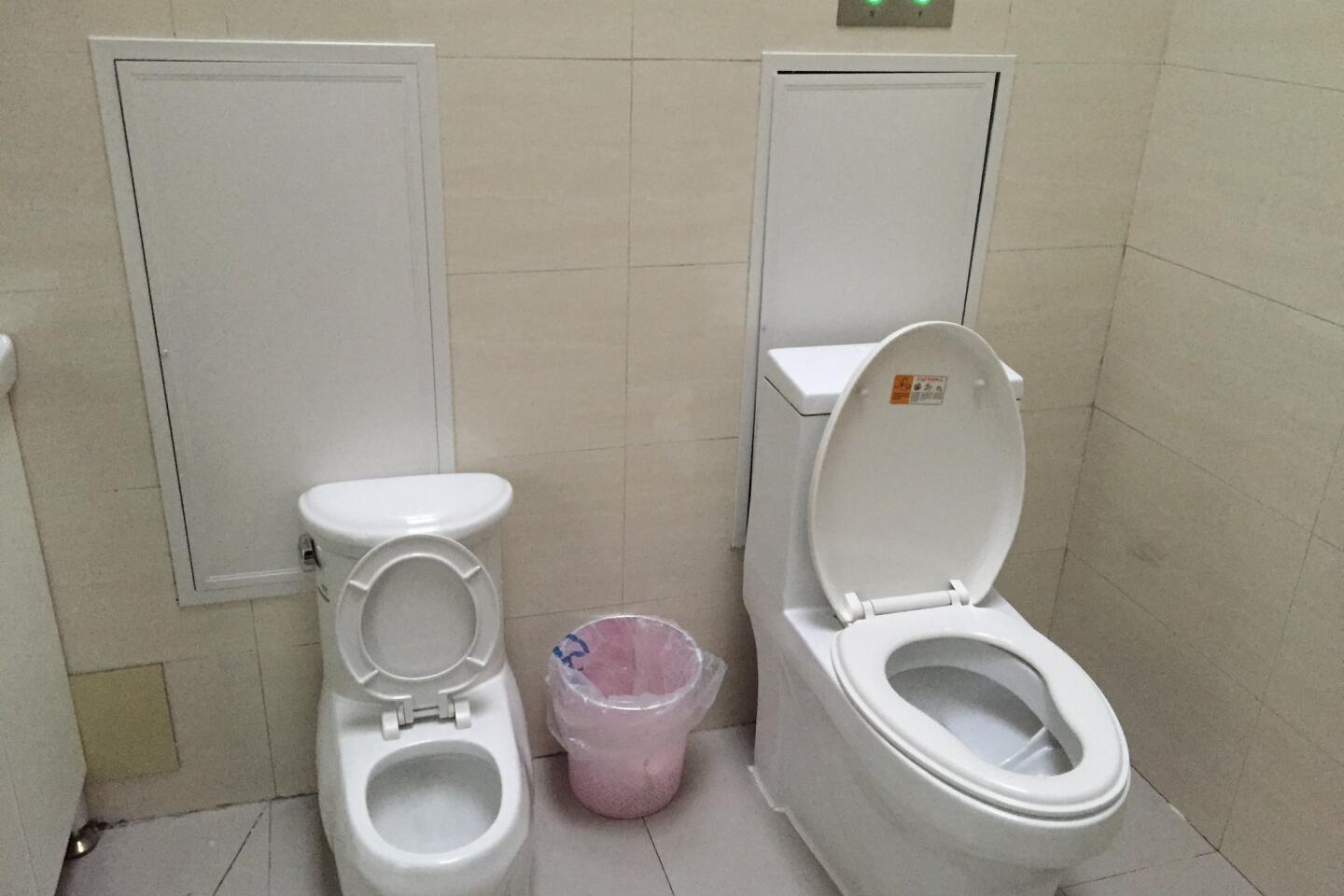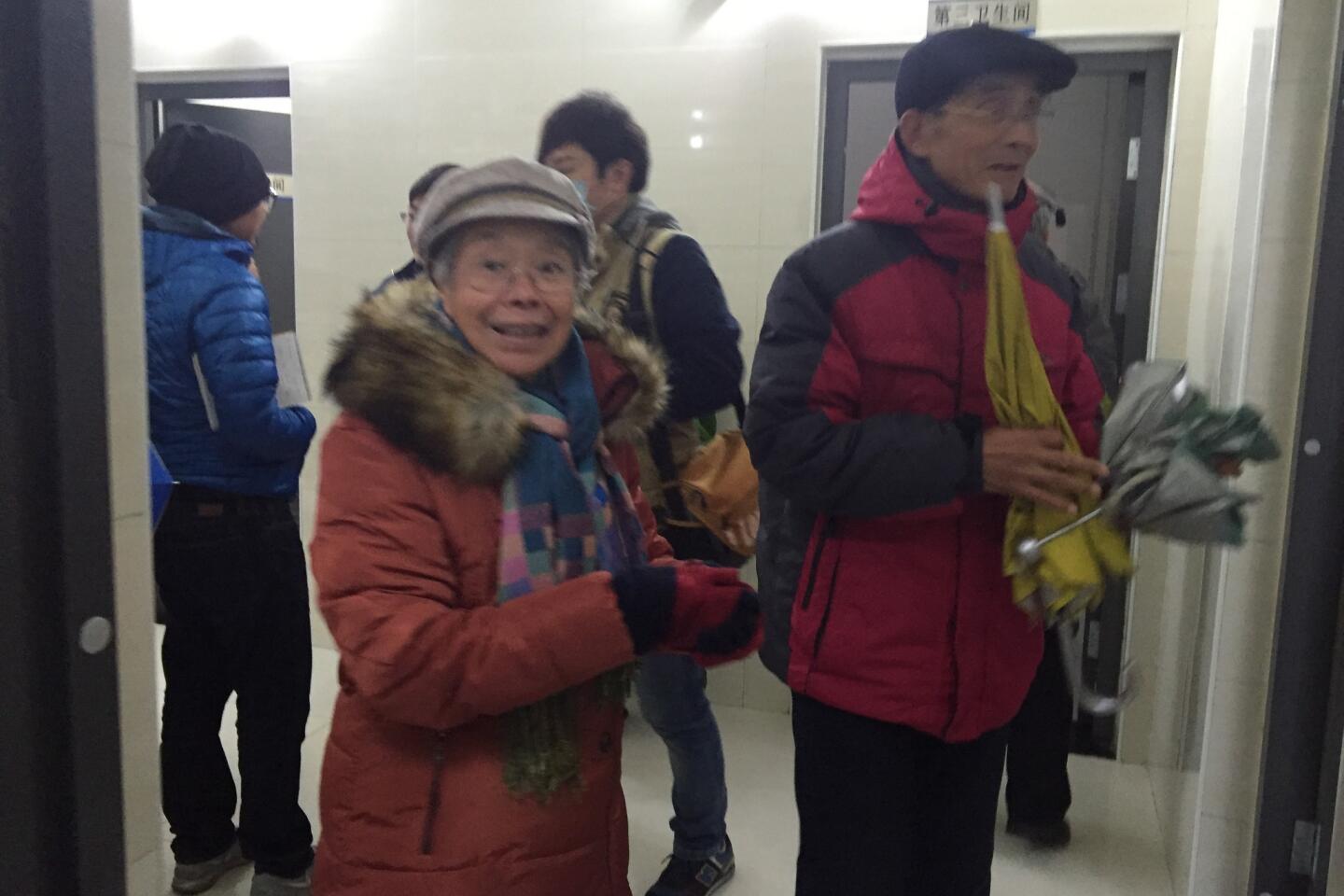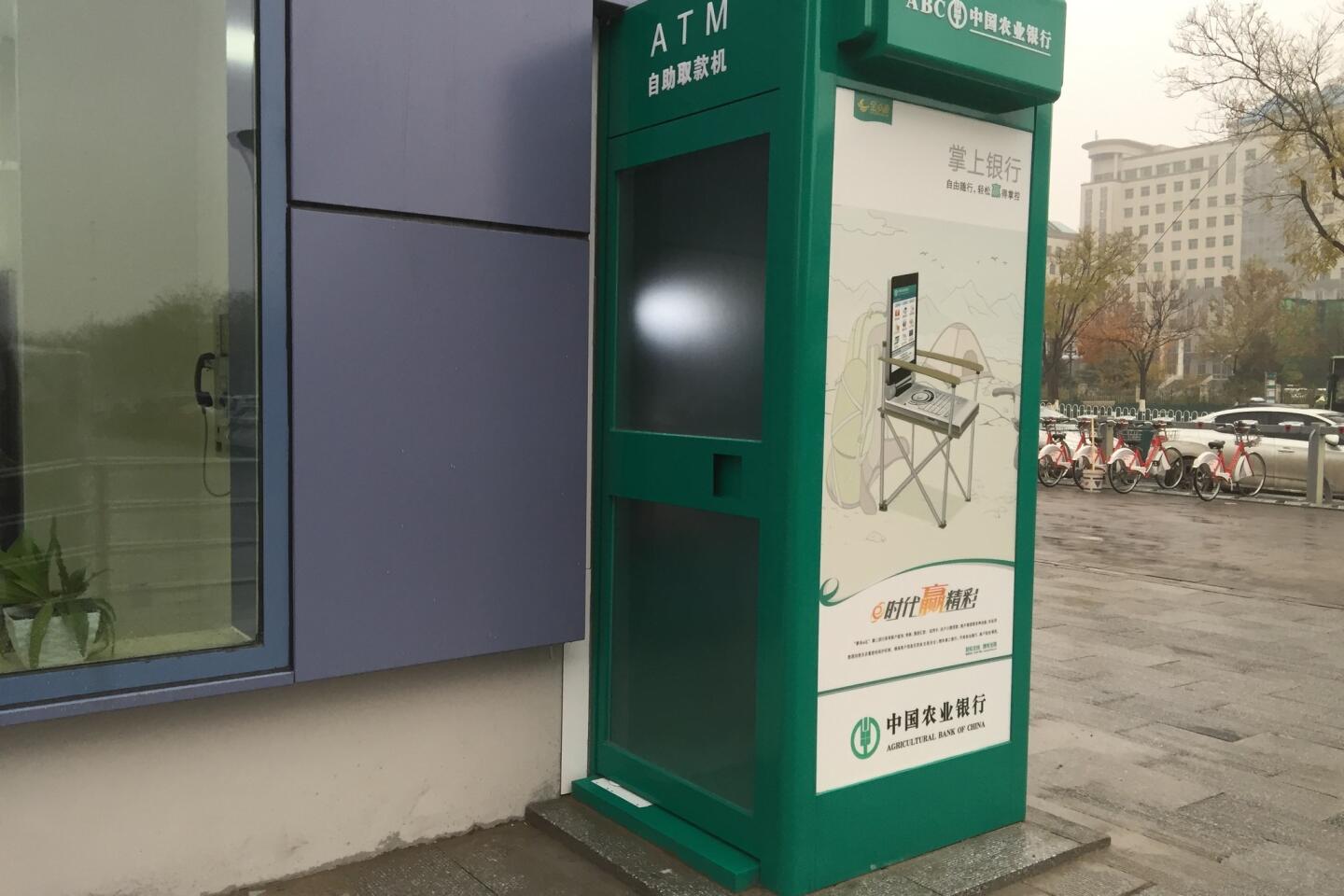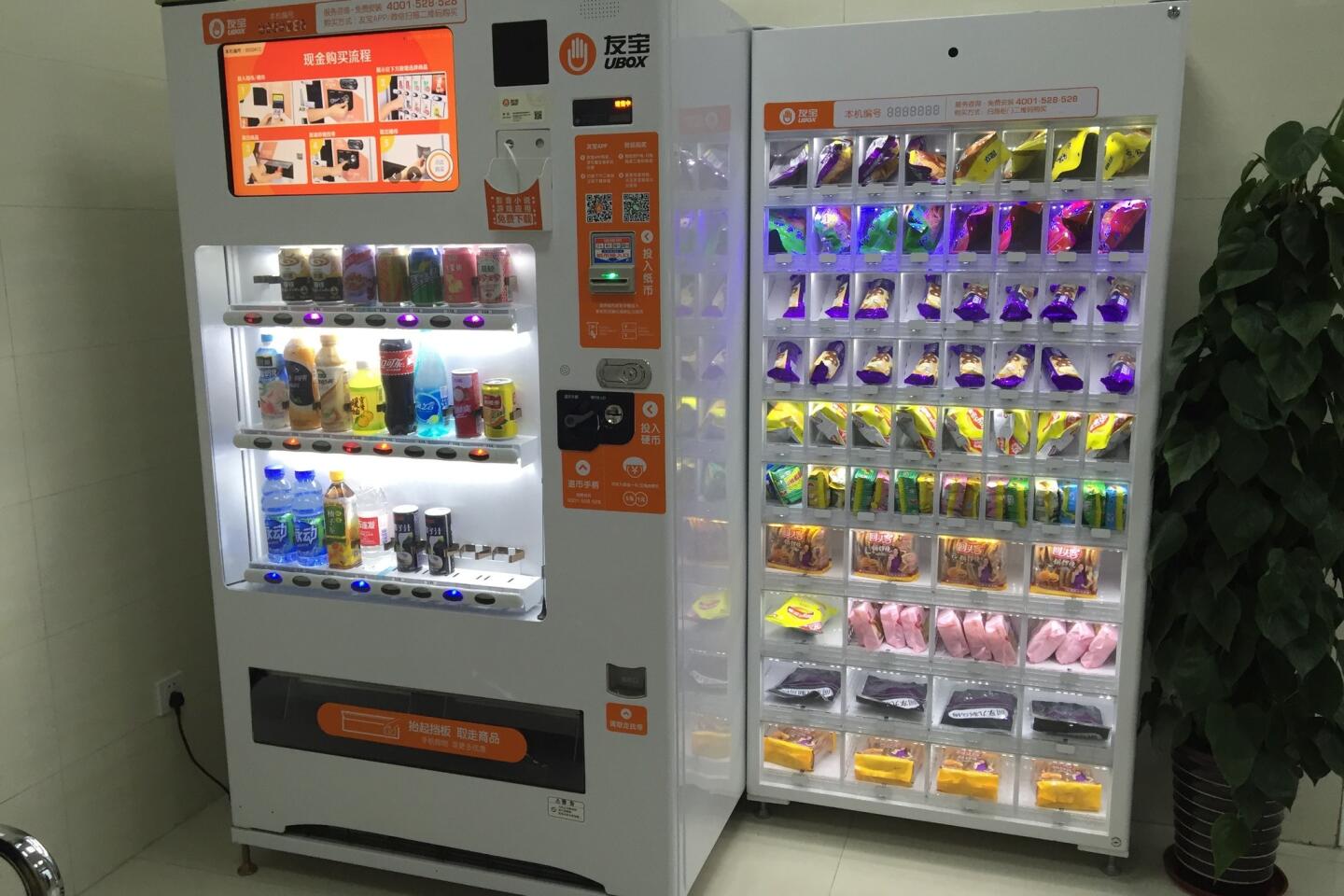World Toilet Day: China aims to bring the WC closer to the Web
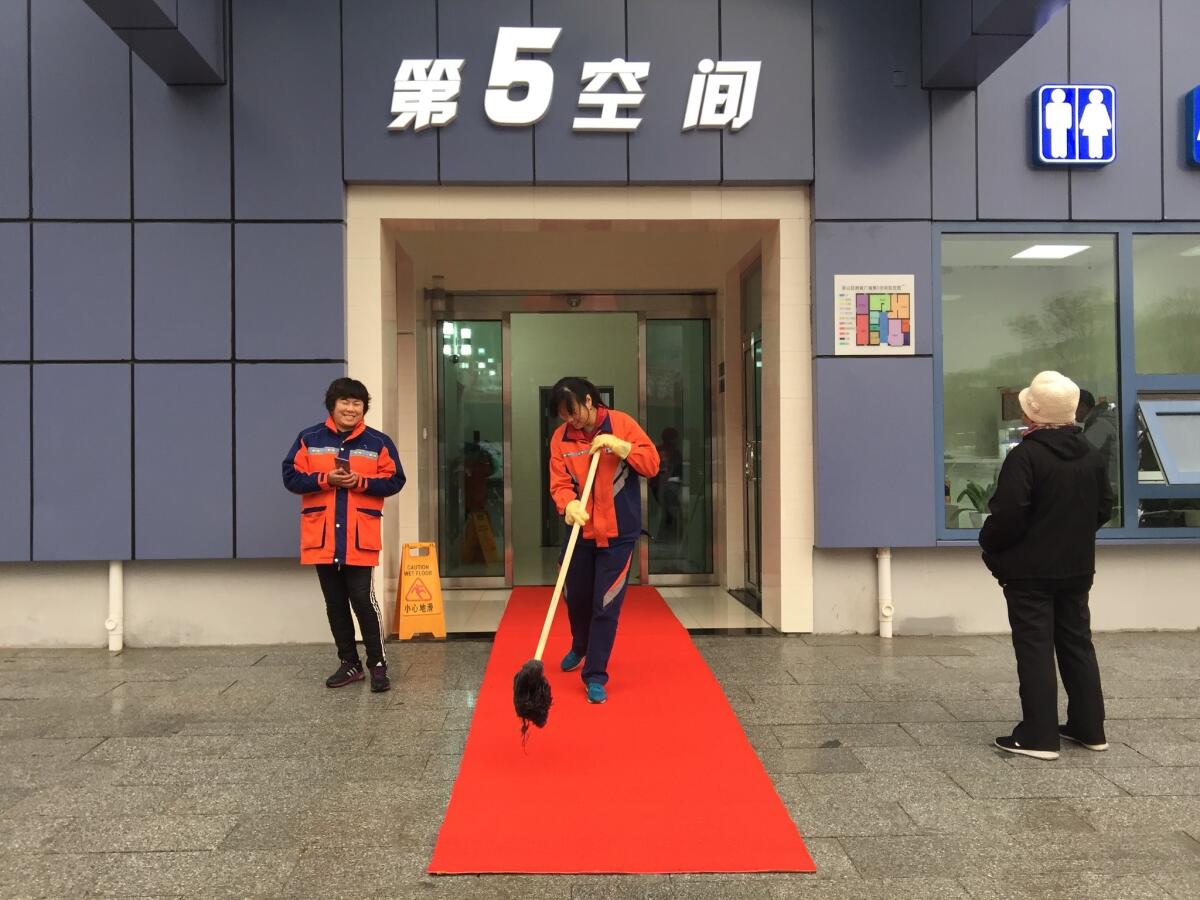
Workers sweep the red carpet at the new “5th Space” public restroom in Beijing.
Want to do more business while doing your, ahem, business? China is here to help.
“Innovation” is the buzzword of the moment in Beijing, with the government putting special emphasis on connecting every part of life to the Web as a way to boost the economy and create jobs. Now, even the humble public restroom is getting pimped for what authorities call the “Internet Plus” era.
In time for World Toilet Day on Thursday, Beijing literally rolled out a red carpet at a new prototype public loo that bears little resemblance — in sight or smell — to the often odoriferous and sometimes downright squalid facilities many inhabitants of the Chinese capital endure.
Resembling a bright, shiny mini-mart, the new facilities feature services including an ATM, a lounge with vending machines, a computerized telephone contraption for paying utility bills, plus an electric-car charging outpost and recycling receptacles for paper and plastic bottles. Enya-style tunes were piped in for ambiance. And that’s before you even get to the stalls.
Each cubicle is equipped with a flat-screen television. The specially designed, environmentally conscious commodes use sink waste water for flushing, and separate urine and feces to further curb water use by 90%, designers say.
The “5th Space” public restroom in Beijing’s southern district of Fangshan is intended to be the first of many such newfangled facilities not only in the capital but across the country, said an employee of the Beijing Environmental Health Group who was on site Thursday. Planners expect about 2,000 flushes per day at Fangshan, with the waste stored on-site in treatment tanks and then hauled away weekly by sewage management trucks.
China’s tourism bureau said Thursday that it plans to install 57,000 new public restrooms across China in the next three years, though only a handful might be as high-tech as the one at Fangshan. But the Beijing Environmental Health Group worker said the state-run company hopes to turn the “Internet plus” toilets into business platforms, funding them with investment from e-commerce providers who can use them as hubs to entice people to order products online and then deliver them there, a la Amazon’s locker program. The higher level of staffing required to keep up these higher-tech toilets will also create service jobs, he said.
“Solving the human waste problem for 1.3 billion people is a major goal for the Chinese government,” said the employee, who declined to give his name because he was not sure he had permission to give media interviews. “It would be a major breakthrough for the development.”
The company’s designers, he said, had conceived various styles of the so-called 5th Space toilets, some with solar panels and others especially for rural areas, where human waste could be treated on-site and made safely usable for farmers to take home as fertilizer.
The Fangshan demonstration toilet aims for a high level of service, with an attendant cleaning each stall after use. Users have their choice of traditional squat-style or Western-style sitting commodes, and a family restroom offers a changing table, a high chair to hold children while their parents go, and even a mini-toilet for toddlers being potty trained.
Still, they’re a far cry from Japan’s super space-age toilets, and there are certain parameters that foreigners might find less than cutting-edge.
For example, one must still pull toilet paper from a common roll upon entering the lavatory, necessitating careful calculations before entering the WC. (A trial study this year in Shanghai that experimented with putting rolls in each stall found that each visitor used more than 5 feet of paper on average, which researchers described as extravagant and budget-busting.)
Once used, the paper is to be discarded in a waste bin and not flushed into the bowl.
But at least Fangshan’s Toilets 2.0 all have dividers between the commodes and doors on the stalls — a “luxury” lacking in many of China’s current generation of public restrooms, where one often must squat side-by-side or face-to-face with total strangers, sometimes over an open trough.
Over the last quarter-century, China has made significant strides in constructing toilets. Since 1990, the government says, sanitation facilities for 593 million people have been upgraded, though the World Health Organization says 10 million rural Chinese still have no toilet access. In Beijing, many residents of traditional alleyways known as hutongs still do not have their own private restrooms and must use chamberpots or leave their homes to use public facilities when nature calls.
Nevertheless, China accounts for a tiny fraction of the 825 million people worldwide who still defecate in the open, according to the WHO.
Many of those trying out the new toilets in Fangshan on Thursday said they were impressed. “It’s pretty good,” said an older gentleman in a smart olive green jacket.
For the first 63 years of his life, Wu Guangxian said he lived in a traditional one-story home with no modern restroom; the family used a chamber pot. Just five years ago, he moved to a new apartment with a flushing toilet.
The 68-year-old expressed approval of the Fangshan facilities, but said he wasn’t sure if the highfalutin’ amenities would stand the test of time.
“I think they need to install surveillance cameras here,” he said. “Otherwise, kids might come and destroy this place.”
Tommy Yang in The Times’ Beijing bureau contributed to this report.
Follow @JulieMakLAT for news from China
ALSO
In Myanmar, Aung San Suu Kyi faces postelection test
Suspected mastermind of Paris attack died in police raid, officials confirm
Allowing Bashar Assad to continue leading Syria is ‘unimaginable,’ Obama says
More to Read
Start your day right
Sign up for Essential California for news, features and recommendations from the L.A. Times and beyond in your inbox six days a week.
You may occasionally receive promotional content from the Los Angeles Times.




